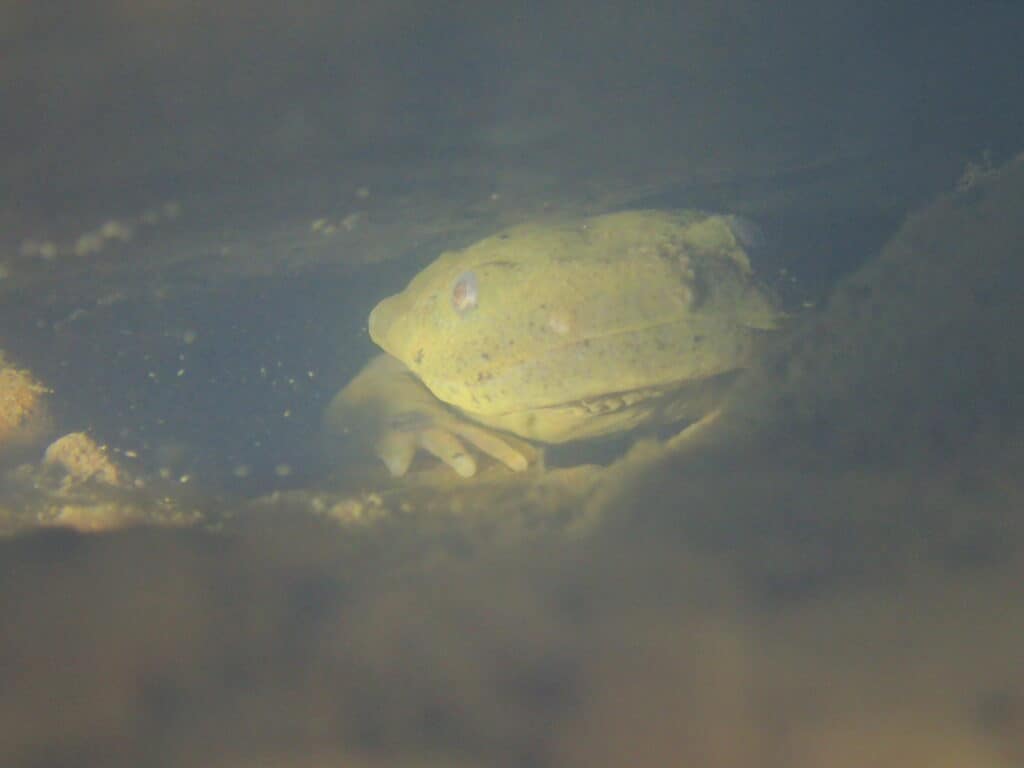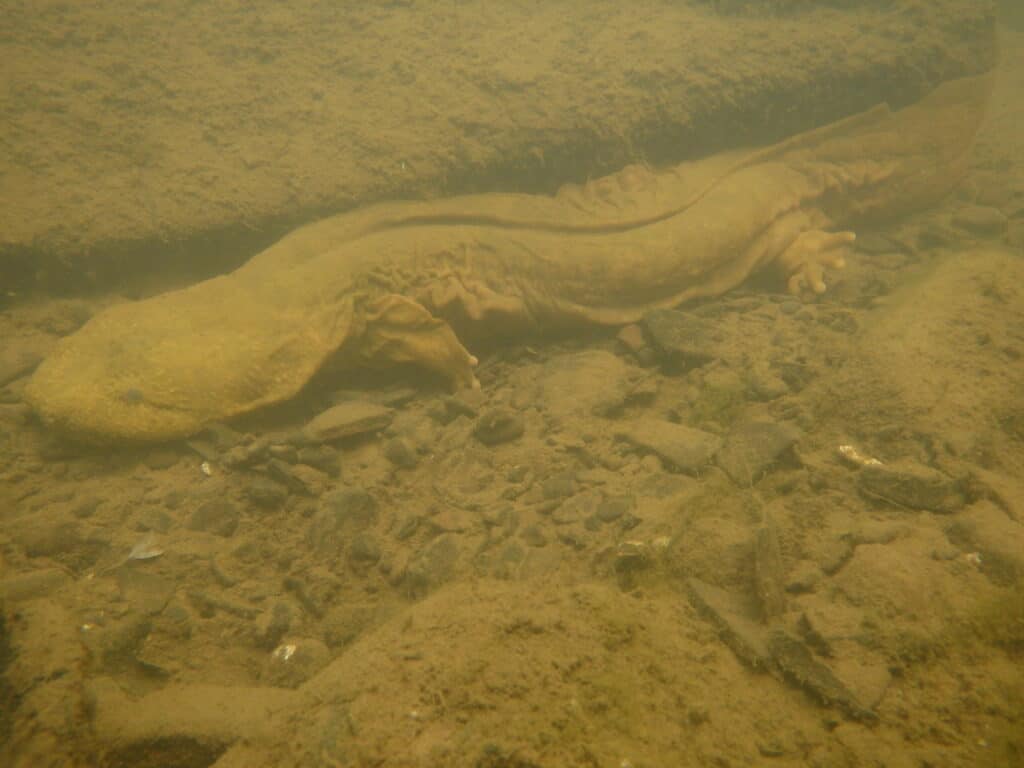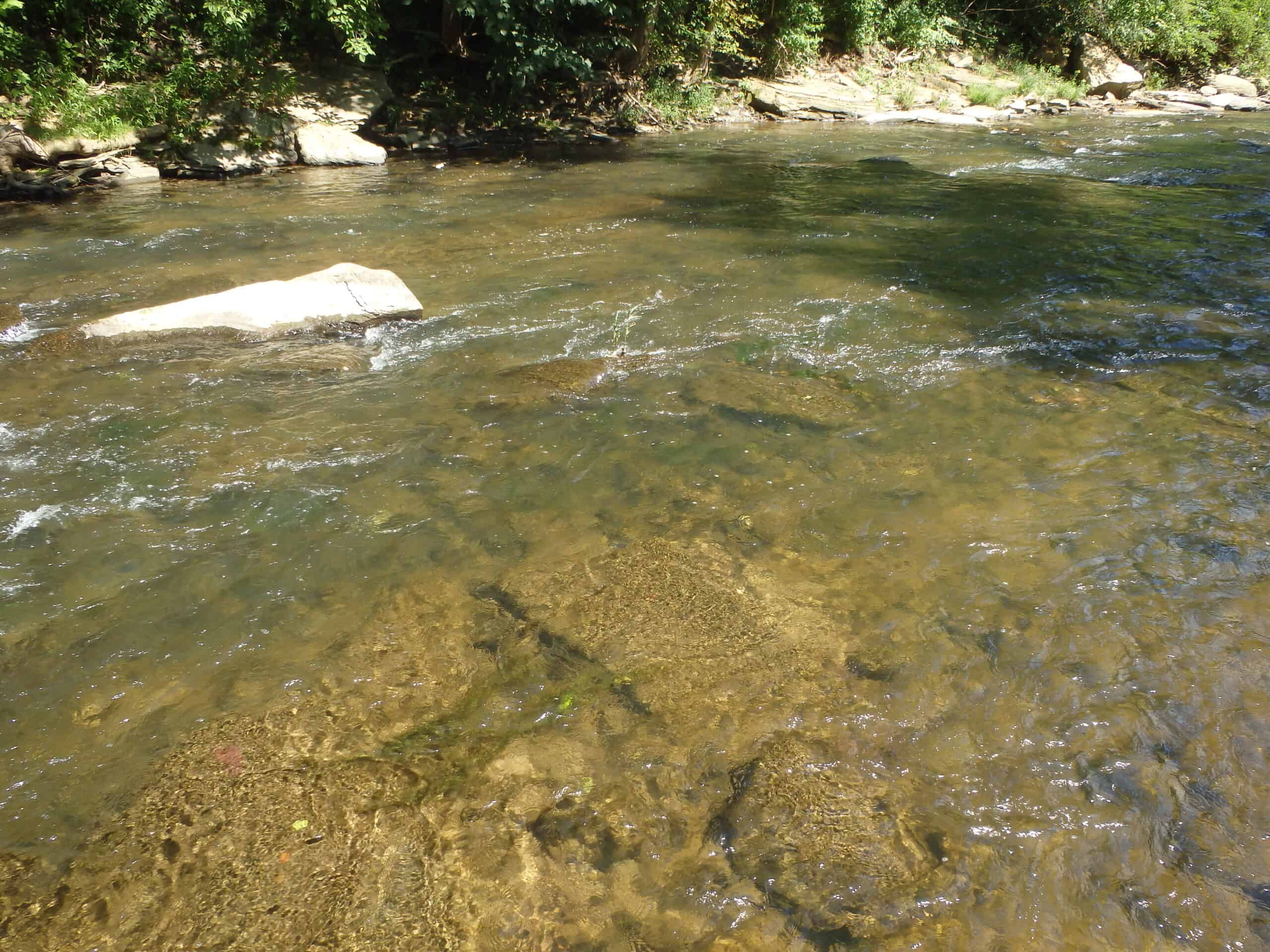Share this article
Wildlife Featured in this article
- eastern hellbender
- birds
- fish
Keeping an eye on wildlife after Ohio train derailment
About 43,700 animals total have died within eight kilometers of waterways where chemicals spilled
When herpetologists Ralph Pfingsten and Greg Lipps began the second statewide survey for eastern hellbenders in Ohio in 2006, they only came up with two of the giant salamanders. Four years later, they came to the conclusion that there was an 82% decline in hellbender numbers compared to the first survey of the mid-1980s.
As a result, the Ohio Department of Natural Resources (ODNR) and partnering zoos began a head-starting program to enhance hellbender numbers in Ohio streams. Since then, 1,800 of the endangered herps have been returned to the wild. But a recent event could affect some of those efforts.
In early February, 38 freight train cars carrying hazardous materials derailed in East Palestine, Ohio, dumping chemicals that may be harmful to people—and wildlife—into some of these streams. “We certainly won’t be releasing any [hellbenders] into that area until we have an idea of what impacts have happened,” said Gregory Lipps, the amphibian and reptile conservation coordinator with Ohio State University.
Materials released from the incident include chemicals used in the manufacturing of everyday products. For example, vinyl chloride, which is used to make PVC, a polymer found often found in packaging and pipes, was spilled.

In the latest update on the spill from Ohio Governor Mike DeWine, the Ohio Environmental Protection Agency, the ODNR and the Ohio Department of Agriculture, they reported the total estimated number of animals killed after exposure is about 43,700 individuals within eight kilometers of local waterways. Most of the deaths, which occurred in Sulphur Run, Leslie Run, Bull Creek, and the North Folk of Beaver Creek, include small fish like suckers, minnows, darters and sculpin as well as frogs and salamanders. Those deaths are a result of acute exposure, which occurs immediately after the event, according to TWS member and Director of Government Relations with American Bird Conservancy Hardy Kern. Effects occurring over time are from chronic exposure.
The ODNR said that after containing the spill, they don’t expect any continued risk to aquatic life there from the toxins.
There have also been anecdotal reports of animals like birds becoming sick and dying in and around East Palestine. However, the ODNR hasn’t seen any evidence of chemical poisoning in dead birds sent in, suggesting those didn’t contract the chemicals from consuming toxic fish.
In addition, the EPA burned the vinyl chloride to help it dissipate faster, which could have scared birds away from their nesting areas, Kern said.
“As long as we’re a society that’s chemically dependent, anything we do in one form or another is going to lead to accidents, disasters, or things we can’t account for.”
Hardy kern
Still, the long-term effects from the spill on wildlife and plants are unknown. The derailment happened before migration season kicked off, so Kern is curious to see how birds making stopovers in the area may be affected. “Any time something like this happens, there’s always that immediate effect we think about,” Kern said. “What doesn’t get as much coverage, and could be even more devastating, is what cascades up after that happens.” Wiping out an entire population of fish or invertebrates could potentially affect birds or other species that use them as a reliable food source, he said.
As for the hellbenders (Cryptobranchus alleganiensis), while the smaller streams that don’t house this species took the brunt of the spills, Lipps said that doesn’t mean the chemicals haven’t made their way into bigger waterways as well. “To draw lines around where you need to protect the hellbender has been such a challenge,” he said. “You can’t control what comes downstream.”

This isn’t the first time the hellbenders have been exposed to toxins. Their distribution overlaps with coal producing counties. Research has shown that the pollution produced by mines has distressed the species, Lipps said, adding that amphibians’ permeable skin makes them susceptible to absorbing toxins.
But until he and his colleagues can safely make it to the streams to snorkel, they are not yet sure what kind of impacts these chemicals may have on hellbenders.
They also don’t have enough knowledge about hellbenders in general to know how they may respond, Lipps said. For example, hellbenders go into a state of torpor in the winter similar to hibernation. The reduced metabolic rates of the animals may either protect them or hinder them, exacerbating their response to toxins.
What Lipps does know is that hellbenders are a conservation reliant species, and incidents like the train wreck can provide serious obstacles to their recovery.
Researchers also know little about the effects of vinyl chloride on animals, since groups like the EPA never thought animals would be exposed to it in this way. “We don’t really know what we’re looking at,” Kern said.
But, he said, we can probably expect incidents like these to happen again in the future. “As long as we’re a society that’s chemically dependent, anything we do in one form or another is going to lead to accidents, disasters, or things we can’t account for. That makes it all the more important for us to be as cautious as possible about the threats we already know and can plan for.”
Header Image: An area downstream of the East Palestine chemical spill includes habitat for hellbenders, including large rocks and flowing water. Credit: Gregory Lipps








